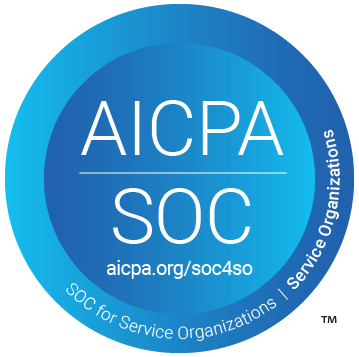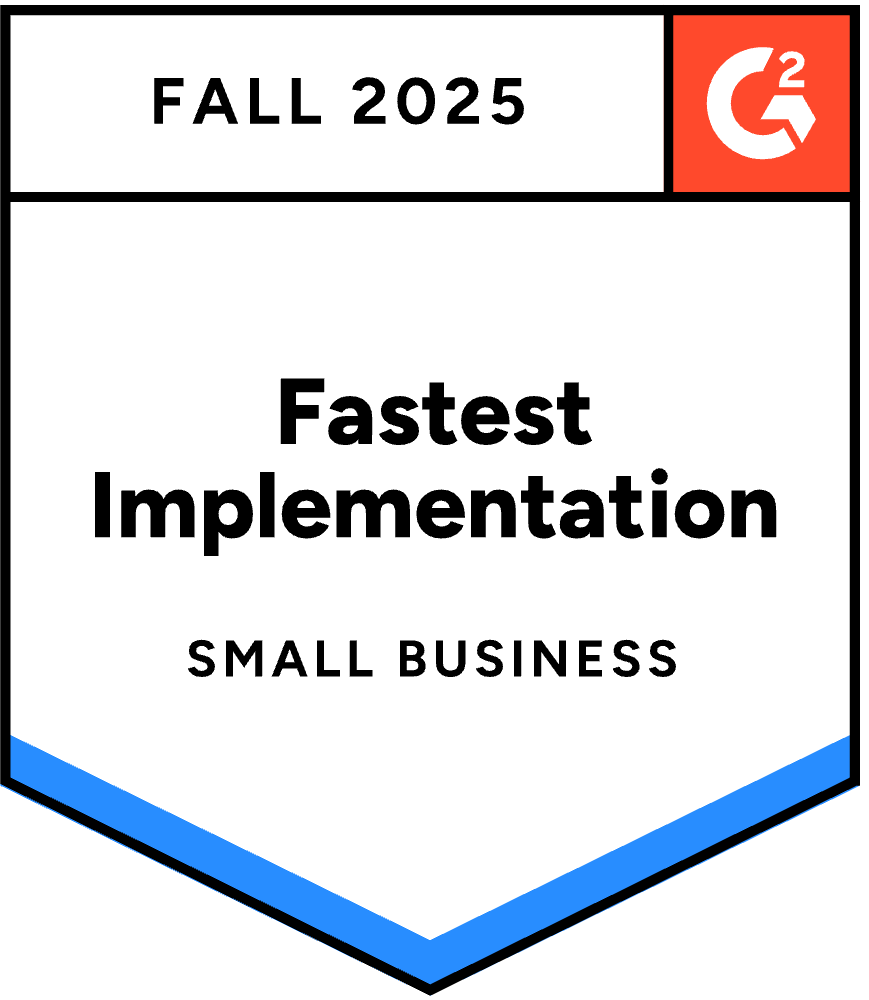What is Rapid and Same-Day Delivery?
What is rapid and same-day delivery?
Rapid and same-day delivery are types of shipping or delivery services that prioritise speed and promptness in getting a product or package from the sender to the recipient. These services are especially popular in the e-commerce and retail industries where customers often expect quick delivery options. Here's what each of these terms generally means:
Rapid Delivery: Rapid delivery typically refers to a service that guarantees a fast delivery timeframe but doesn't specify an exact number of hours or minutes. It could vary from a few hours to one or two days. The exact definition of rapid delivery may depend on the specific courier or retailer providing the service. The goal is to deliver products more quickly than standard shipping options, making it a convenient choice for customers who want their items sooner but may not require same-day delivery.
Some example companies that offer rapid delivery are:
- Amazon Prime: Amazon Prime offers same-day and one-day delivery for eligible products to its members in select areas. They also have a service called Amazon Prime Now, which provides ultra-rapid delivery of groceries, household items, and more within a few hours.
- Walmart: Walmart offers same-day delivery and two-day delivery for a wide range of products through their Walmart+ membership program.
- Instacart: Instacart provides rapid grocery delivery from various grocery stores in your area, often within hours of placing an order.
- DoorDash: While primarily known for food delivery, DoorDash has expanded to offer rapid delivery of various items, including groceries, convenience store items, and more through their DashPass service.
- Uber Eats: Uber Eats has extended its delivery service to include grocery and convenience store deliveries in some locations, providing rapid delivery of essential items.
- Postmates: Postmates (now part of Uber Eats) offered on-demand delivery of various items, including food, groceries, and household goods, in select areas.
- Target: Target offers same-day delivery and in-store pickup options for a wide range of products through their Drive Up and Day Shipping services.
- Best Buy: Best Buy offers same-day and next-day delivery for eligible products, including electronics and appliances, in certain areas.
- Safeway: Safeway and other grocery store chains provide rapid grocery delivery through their own services or third-party apps like Instacart.
- FedEx SameDay: FedEx offers a same-day delivery service for time-sensitive shipments and urgent deliveries for businesses and individuals.
- DHL SameDay: DHL provides same-day delivery and time-critical courier services for businesses.
Same-Day Delivery: Same-day delivery, as the name suggests, means that a product or package will be delivered on the same day it was ordered. This service is highly time-sensitive and is often used for urgent or last-minute orders. It's typically more expensive than standard or rapid delivery options due to the logistical challenges involved in delivering items on the same day. Same-day delivery is especially common in densely populated urban areas and is offered by various retailers, courier services, and delivery platforms.
Companies like Amazon and Walmart have been well known to offer this service, prompting customers to check out in a faster manner to receive their item later that day.
Both rapid and same-day delivery services have become more popular with the rise of e-commerce and the demand for faster shipping options. They cater to customers who value quick turnaround times and convenience, but the availability of these services may vary depending on your location and the specific retailers or delivery providers you choose.
What are the differences between same-day and rapid delivery?
Same-day and rapid delivery are both expedited shipping options, but they differ in several key aspects:
- Timeframe:
- Same-Day Delivery: Same-day delivery guarantees that the product will be delivered on the same day it was ordered, typically within a few hours or by the end of the business day.
- Rapid Delivery: Rapid delivery, while faster than standard shipping, doesn't necessarily promise delivery on the same day. The timeframe for rapid delivery may vary from a few hours to one or two days.
- Cost:
- Same-Day Delivery: Same-day delivery is usually more expensive than standard shipping and rapid delivery because of the need for faster service and logistics involved in same-day deliveries.
- Rapid Delivery: Rapid delivery is generally more cost-effective than same-day delivery, making it a middle ground between standard shipping and same-day service.
- Availability:
- Same-Day Delivery: Same-day delivery is often available in urban and densely populated areas where there's a greater demand for rapid deliveries. It may not be as widely available in rural or less populated regions.
- Rapid Delivery: Rapid delivery might have broader availability, spanning urban, suburban, and rural areas, depending on the specific retailer or courier service.
- Use Cases:
- Same-Day Delivery: Same-day delivery is ideal for situations that require urgent or immediate product delivery, such as last-minute gifts, essential supplies, or emergency needs.
- Rapid Delivery: Rapid delivery is suitable for customers who want faster delivery without the extreme urgency associated with same-day service. It offers a balance between speed and cost.
- Retailers and Couriers:
- Same-Day Delivery: Same-day delivery is commonly offered by large e-commerce platforms, grocery delivery services, and some retailers with a local presence.
- Rapid Delivery: Rapid delivery may be provided by a wider range of retailers, courier services, and local delivery companies.
- Logistics:
- Same-Day Delivery: Same-day delivery requires highly efficient and expedited logistics, often involving dedicated delivery personnel and localised distribution centres.
- Rapid Delivery: Rapid delivery also demands efficient logistics but may allow for slightly more flexibility and lower urgency in delivery execution.
In summary, same-day delivery and rapid delivery differ in terms of the guaranteed delivery timeframe, cost, availability, use cases, and the types of companies that offer these services. The choice between the two depends on your specific needs, such as the urgency of delivery and your willingness to pay for faster shipping.
Is it easy for companies to adopt rapid and same-day delivery?
The short answer is no, making a switch from next-day delivery to same-day or rapid delivery can be very challenging, especially if your business lacks the resources or infrastructure to do so. Here are some factors to consider:
- Size and Resources:
- Large Companies: Larger companies, especially major retailers and e-commerce platforms, often have the resources and infrastructure to implement rapid and same-day delivery services more easily. They may have established supply chains, distribution centres, and the financial capacity to invest in the necessary logistics and technology.
- Small and Medium-Sized Businesses (SMBs): SMBs might face more challenges in offering these services due to limited resources. However, they can partner with third-party delivery providers or platforms that specialise in rapid and same-day delivery to access the required capabilities without significant upfront investments.
- Location and Population Density:
- Urban vs. Rural: Offering rapid and same-day delivery is generally easier in urban and densely populated areas due to the proximity of customers and the existence of delivery infrastructure. In rural or remote areas, it can be more challenging and costly to provide these services.
- Logistics and Infrastructure:
- Distribution Centres: Companies with existing distribution centres and warehouses in key locations can leverage these facilities to fulfil rapid and same-day delivery orders more efficiently.
- Last-Mile Delivery: The "last-mile" delivery segment (the final leg of the delivery process to the customer's doorstep) is crucial for rapid and same-day services. Companies need to have efficient last-mile delivery solutions in place, which can involve in-house delivery teams, partnerships with courier services, or crowdsourced delivery platforms.
- Technology and Software:
- Companies must invest in or integrate technology and software solutions that streamline order management, route optimisation, real-time tracking, and customer communication to facilitate these delivery services.
- Customer Demand:
- Companies considering rapid and same-day delivery should evaluate whether there is sufficient demand for such services among their customer bases. The existence of a strong demand can justify the investment in offering these options.
- Competition:
- If competitors in a particular industry or market are already providing rapid and same-day delivery, companies may feel pressure to adopt similar services to remain competitive.
- Regulatory and Legal Considerations:
- Companies need to be aware of any legal and regulatory requirements related to delivery services, including issues like liability, insurance, and permits.
In summary, while offering rapid and same-day delivery can be challenging for some companies, it is generally feasible for both large and small businesses with the right strategies and resources in place. Many companies choose to partner with established delivery and logistics providers or leverage third-party platforms to offer these services without building their own delivery infrastructure from scratch. The decision to adopt these services should be based on a thorough assessment of the company's capabilities, customer demand, and the competitive landscape.
How can address verification help with rapid and same-day delivery?
Address verification is a crucial component of the logistics and operations behind rapid and same-day delivery services. Here's how address verification can help with ensuring the success of these delivery options:
- Accuracy: Address verification ensures that the address provided by the customer is accurate and complete. It minimises the risk of deliveries being made to the wrong location or getting delayed due to incorrect address details.
- Efficiency: By verifying addresses in real-time, delivery drivers can optimise their routes more effectively. This helps reduce the time it takes to reach the destination and, in the case of same-day delivery, increases the likelihood of meeting delivery deadlines.
- Minimising Failed Deliveries: Ensuring the accuracy of delivery addresses reduces the chances of failed deliveries. Failed deliveries can be costly and time-consuming for companies, particularly when attempting to provide rapid or same-day services.
- Customer Experience: Address verification contributes to a positive customer experience. Customers receive their orders more quickly and with greater accuracy, leading to increased satisfaction and repeat business.
- Cost Savings: Fewer delivery failures and more efficient routes can lead to cost savings for companies providing rapid and same-day delivery services. These cost savings can help offset the higher operational expenses associated with expedited delivery.
- Compliance: Address verification can help companies comply with legal and regulatory requirements related to delivery services, ensuring that they are delivering to the correct addresses and adhering to privacy and data protection laws.
- Data Collection: Over time, address verification can help companies collect data on delivery locations, customer preferences, and other valuable information that can be used to further optimise delivery operations and expand service offerings.
Address verification can be implemented through various means, including:
- Address Validation APIs: Many companies use address validation APIs that automatically check and standardise addresses during the online ordering process.
- GPS and Location Services: For in-house delivery operations, GPS and location-based services can verify addresses at the time of delivery.
- Machine Learning and Geocoding: Advanced systems use machine learning and geocoding techniques to verify and standardise addresses.
- Customer Communication: In some cases, delivery drivers may need to communicate with customers to confirm address details, particularly if the provided address is unclear or incomplete.
It's worth noting that the effectiveness of address verification relies on the quality of the address data and the accuracy of the tools and systems used. Regularly updating address databases and employing advanced address validation technology is essential for ensuring a seamless and error-free rapid and same-day delivery process.
How can businesses get started implementing rapid and same-day delivery?
Implementing rapid and same-day delivery services can be a significant advantage for businesses, especially in today's fast-paced e-commerce landscape. Here are the steps to get started with such services:
- Market Research and Feasibility Analysis:
- Conduct market research to understand your target audience's preferences and expectations for fast delivery.
- Assess the competition in your industry and region to determine if same-day delivery is a differentiating factor.
- Define Your Service Area:
- Determine the geographical areas where you can realistically offer same-day or rapid delivery. Start with a manageable local or regional scope.
- Develop a Business Plan:
- Create a comprehensive business plan that outlines your goals, strategies, and financial projections.
- Calculate the costs involved in implementing rapid delivery, including logistics, technology, and personnel.
- Logistics and Infrastructure:
- Set up or optimise your supply chain and distribution network to support fast deliveries.
- Establish partnerships with local couriers, delivery services, or consider setting up your own delivery fleet.
- Inventory Management:
- Implement efficient inventory management systems to ensure that products are readily available for immediate delivery.
- Consider maintaining regional warehouses or distribution centres.
- Technology Integration:
- Invest in technology for real-time order tracking, route optimization, and inventory management.
- Create a user-friendly online ordering platform and mobile app if applicable.
- Staffing and Training:
- Hire and train a team of delivery drivers or couriers.
- Ensure that your staff understands the importance of prompt and accurate deliveries.
- Delivery Options and Pricing:
- Define the delivery options you'll offer, such as same-day, next-day, or express delivery.
- Set competitive pricing while accounting for operational costs.
- Communication and Customer Service:
- Provide clear and consistent communication with customers regarding order status, delivery times, and tracking information.
- Have a responsive customer service team to address inquiries and resolve issues promptly.
- Marketing and Promotion:
- Promote your rapid delivery service through marketing campaigns, social media, and other advertising channels.
- Highlight the benefits and convenience of same-day or rapid delivery.
- Test and Optomise:
- Start with a small-scale launch to test the process and gather feedback.
- Continuously monitor and optimise your delivery process to improve speed and efficiency.
- Compliance and Legal Considerations:
- Ensure that you comply with local, state, and federal regulations related to delivery services, including licensing and insurance.
- Feedback and Quality Assurance:
- Collect feedback from customers and use it to make improvements to your delivery service.
- Maintain a high level of quality control to minimise errors and delays.
- Scaling and Expansion:
- As your same-day or rapid delivery service gains traction, consider expanding your service area or offering additional delivery options.
- Partnerships and Collaborations:
- Explore partnerships with local businesses to share delivery resources and expand your reach.
Implementing rapid and same-day delivery requires careful planning and investment, but it can help your business stay competitive and meet the growing demand for fast delivery in the modern marketplace.
Melissa – The Address Experts
As the leader in address verification, Melissa combines decades of experience with unmatched technology and global support to offer solutions that quickly and accurately verify addresses in real-time, at the point of entry. Melissa is a single-source vendor for address management, data hygiene and pre-sorting solutions, empowering businesses all over the world to effectively manage their data quality.
250 +
Countries & Territories
1000555787 +
Addresses Verified
40 +
Years Of Experience
10000 +
Satisfied Customers Worldwide






